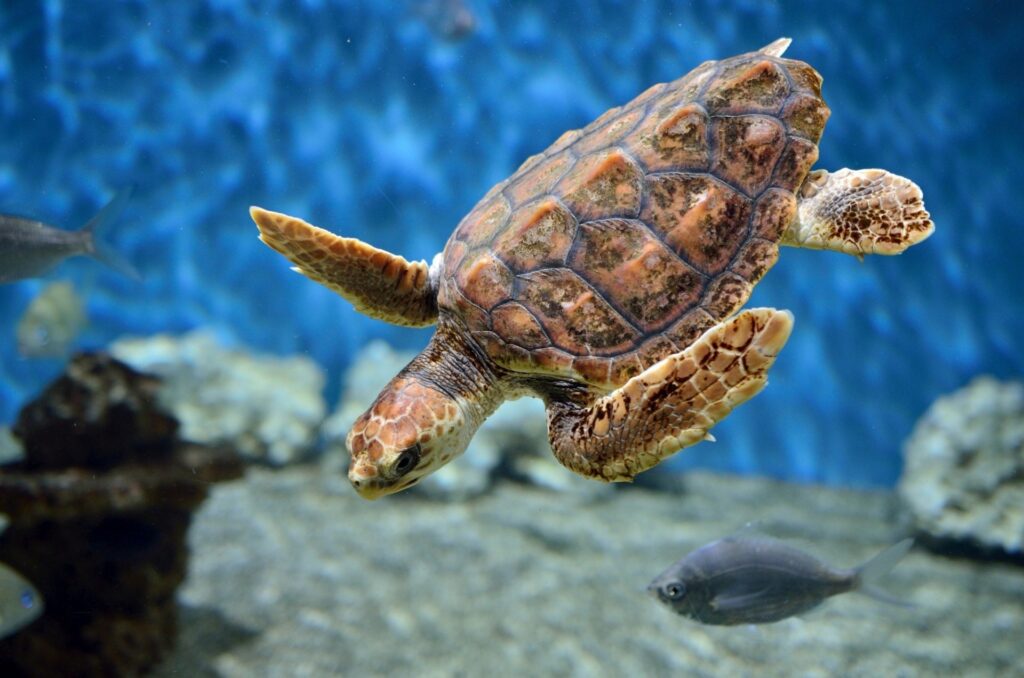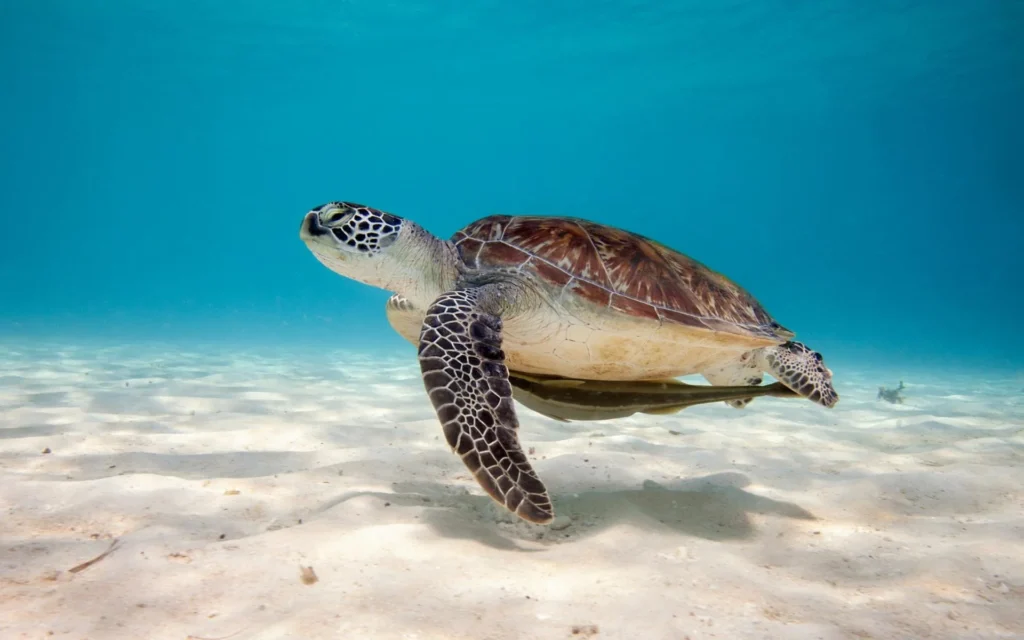Table of Contents
ToggleIntroduction
Turtles, with their slow and deliberate movements, often captivate the curiosity of pet owners and nature enthusiasts alike. As omnivores, turtles display a varied palate, consuming plant and animal matter. Can Turtles Eat Flies? This diversity in their diet raises questions about whether turtles can eat flies. Suitability of unconventional food sources, such as flies.

Understanding The Natural Diet Of Turtles
Turtles exhibit various dietary preferences depending on their species and habitat. While the specifics vary, most turtles can be classified into three main categories based on their feeding habits:
Omnivores: Many turtle species are omnivores, consuming plant and animal matter. This includes various vegetables, fruits, insects, worms, and aquatic organisms.
Herbivores: Some turtles are primarily herbivores, relying on a diet of leafy greens, vegetables, and fruits. These turtles may consume minimal or no animal protein.
Carnivores: Carnivorous turtles have a diet primarily composed of animal matter. This can include fish, insects, small mammals, and other aquatic prey.
Nutritional Requirements Of Turtles
The nutritional needs of turtles are influenced by various factors, including their species, age, and environmental conditions. However, some fundamental nutritional requirements apply across the board:
Protein: Essential for growth, tissue repair, and overall vitality, protein is a crucial component of a turtle’s diet. Protein sources include insects, worms, fish, and other small animals.
Calcium: Critical for shell development and maintenance, calcium is a vital mineral in a turtle’s diet. It is often sourced from a combination of leafy greens, vegetables, and calcium-rich supplements.
Vitamins and Minerals: Turtles require a variety of vitamins and minerals for various physiological functions. These are typically obtained from a diverse diet, including vegetables, fruits, and protein.
Fiber: An essential component for digestive health, fiber is derived from plant-based foods such as vegetables and leafy greens.
Can Turtles Eat Flies?
The question of whether turtles can eat flies can be addressed by considering the nutritional value of flies and the feeding habits of turtles.
Nutritional Value of Flies:
Protein Content: Flies are relatively high in protein, making them a potentially valuable protein source for turtles. Protein is essential for growth, muscle development, and overall metabolic functions.
Fat Content: Flies also contain fats, a concentrated energy source. While turtles require some dietary fat, excessive intake can lead to health issues, so moderation is key.
Vitamins and Minerals: Flies can provide a variety of vitamins and minerals, including B vitamins and iron. However, the exact nutritional composition can vary based on the specific type of fly.
Considerations for Feeding Flies to Turtles:
Size and Age of the Turtle: The size of the turtle matters when considering whether to introduce flies into its diet. Larger turtles may be able to handle larger prey, while smaller turtles may need smaller insects or flies.
Species of Turtle: Different turtle species have varying dietary requirements. While some turtles are opportunistic feeders and may consume insects in the wild, others may primarily rely on plant matter.
Avoiding Pesticides: Wild-caught flies or insects may carry pesticides or contaminants that can harm turtles. It’s crucial to ensure that any insects offered to turtles are from a safe and pesticide-free source.
Variety in the Diet: While flies can provide a protein boost, they should not constitute turtles’ sole or primary food source. A diverse diet that includes vegetables, fruits, and other protein sources is essential for overall nutritional balance.
Observation of the Turtle: Introducing a new food item, such as flies, should be done gradually while closely observing the turtle for any adverse reactions. If the turtle shows signs of distress or digestive issues, it’s advisable to discontinue the new food item.
Risks And Considerations
Feeding flies to turtles, while potentially beneficial, comes with certain risks and considerations that should be considered.
Disease Transmission: Insects, including flies, can carry diseases or parasites that may be transmitted to turtles. Using commercially bred insects from reputable sources reduces the risk of disease transmission.
Overfeeding: While flies can offer nutritional benefits, overfeeding on a single type of food can lead to an imbalance in the turtle’s diet. It’s crucial to maintain a varied and well-balanced diet.
Avoidance by Some Turtles: Not all turtles may be interested in consuming flies. Turtles can be selective eaters, and individual preferences vary. If a turtle consistently rejects a certain food item, it may be best to explore other options.
Environmental Impact: For those considering using wild-caught flies, it’s important to be mindful of the ecological impact. Overcollecting insects from natural habitats can disrupt local ecosystems.
Creating A Balanced Diet For Turtles

A balanced and varied diet is key for turtles for optimal health and well-being. Here’s a general guideline for creating a well-rounded diet:
Protein Sources: Include a mix of insects (crickets, mealworms), worms, small fish, and other aquatic organisms.
Vegetables: Offer a variety of dark, leafy greens (kale, collard greens, mustard greens), as well as other vegetables like carrots, squash, and bell peppers.
Fruits: Provide limited amounts of fruits such as strawberries, melons, and bananas to add natural sugars and additional nutrients.
Calcium Supplementation: Calcium supplementation may be necessary to ensure proper shell development, depending on the turtle’s diet and habitat.
Commercial Turtle Pellets: High-quality commercial turtle pellets designed to meet the nutritional needs of turtles can serve as a convenient and balanced part of their diet.
Conclusion
Turtles can eat flies as part of a diverse and balanced diet. Flies offer a protein-rich option that aligns with the natural omnivorous tendencies of many turtle species. However, it’s crucial to consider the size and age of the turtle, the species-specific dietary requirements, and the potential risks associated with disease transmission and environmental impact.
As responsible pet owners or wildlife enthusiasts, the focus should be on providing a well-rounded diet that meets the nutritional needs of turtles. Observation, moderation, and consideration of the turtle’s preferences are essential to ensuring their health and happiness. By incorporating a variety of food items into their diet, including flies in moderation, we can contribute to the overall well-being of these fascinating and ancient reptiles.







